The Maldives is a remote Indian Ocean archipelago of coral atolls comprising 1,192 islands, of which fewer than 200 are currently inhabited. Buddhism had spread to the islands during the first millennium CE, but was completely displaced by processes of Islamization that began in the twelfth century with abrupt political and economic transformations as institutional Buddhism was abolished and mosques built on royal commissions across a number of islands. Over the centuries that followed, integration into trans-regional circulations of commerce and culture facilitated the development of distinctive forms of Muslim vernacular culture including the country’s traditional coral stone mosques, funerary monuments, and Dhivehi-language literature. Despite its long history and rich heritage, the Maldives has been so little studied that even in major research university library holdings have precious few sources available for the exploration of the country’s history.
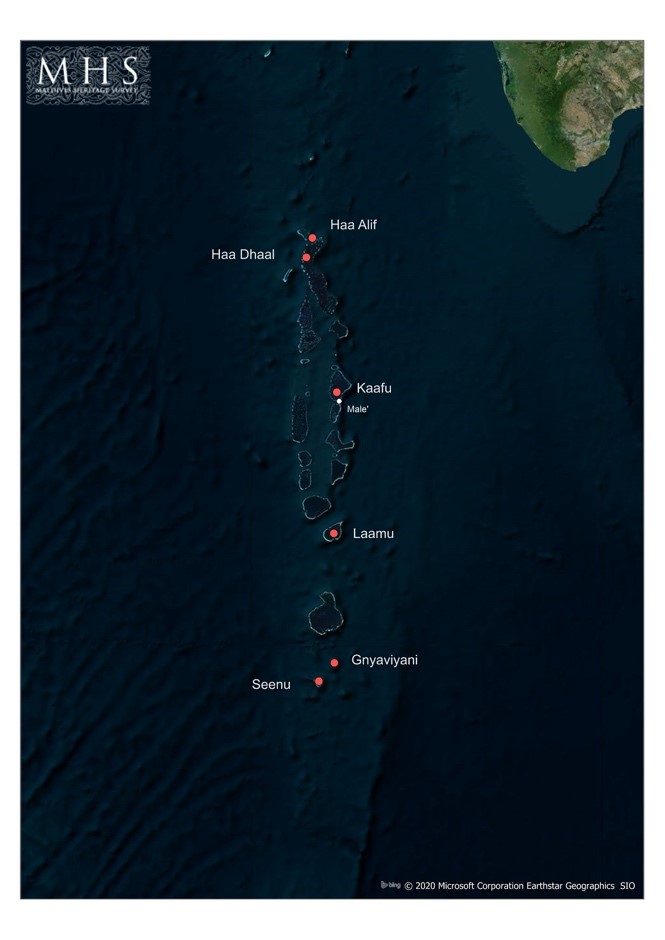
For the past two-and-a-half years, The Maldives Heritage Survey (MHS) has worked to systematically inventory and digitally document endangered tangible cultural heritage in the Maldives – including mosques, cemeteries, Buddhist temple ruins, and other historical structures and physical objects – to create an open-access resource website and heritage database. The materials documented through this work are critically endangered, facing both natural and human threats that jeopardize the survival and accessibility of historical information for this vital node in pre-modern global economic and religious networks at the cross-roads of the interconnected region of Maritime Southern Asia.
Our pioneering systematic survey of the archaeological heritage of the Maldives has identified sites with GPS coordinates, and produced robust documentation of each with detailed measurements, photographs, aerial photography and video, 3D scans, AutoCAD plans and elevations, as well as digitized manuscripts and video recordings of oral history interviews. We have further contextualized sites (wherever relevant) by references to any mention that may have been made of a particular site in government reports, local publications, and/or scholarly works published abroad. For the overwhelming majority of these sites, however, we have generated the first-ever documentation – thus making a substantial contribution to the source material available to scholars interested in the history and culture of this vital crossroads of civilizations in the medieval and early modern Indian Ocean world.
To date, our survey has covered Laamu (Haddhunmathee), Gnaviyani (Fuvamulah), Addu (Seenu), and Haa Alif (North Thiladhunmatheee) atolls, started preliminary work in Haa Dhaalu (South Thiladhunmatheee), and surveyed a number of islands in Kaafu (Malé) Atoll. Over the course of this work, the project has completed a comprehensive survey of 152 islands where we have located and documented 288 heritage sites, 1,154 structures, 3,734 objects, in addition to digitizing 231 historic manuscripts, producing 28 video recordings of oral history interviews and registering 87 point clouds of 3D imaging.
Alongside the primary fieldwork, we have been working to incorporate a broader range of material on Maldives heritage and history into the documentation for the website. Toward this end we have thus engaged with a range of other institutions including the Maldives National Museum, the Maldives National Archives, the Utheemu Ganduvaru Palace, the Ashmolean Museum at Oxford, and the Japanese National Museum of Ethnology (Minpaku) to digitize relevant materials from their collections and arrange for permissions to provide open access to new digital heritage resources. Such collaborations further enhance the scope and accessibility of digital heritage documentation on the Maldives, allowing for a consolidated point of open-access for these records and supporting materials to scholars, curators, policy makers, and the broader public.

Manuscript of a land endowment on the island of Meedhoo (1675)
All of this material is now available on the Maldives Heritage Survey’s project website. This is an open-access resource that includes a number of inter-related sections, including:
- A short video introducing the work and scope of the project
- A GIS-integrated database of sites, structures, and objects documented in the course of our field survey work.
- An online manuscript reader built around an interactive Universal Viewer interface that makes available a range of texts in Dhivehi, Arabic, and English including manuscripts digitized by our survey team in the field, as well as related documents from the collections of the Maldives National Museum and the Maldives National Archives.
- A video library of oral history interviews presenting community perspectives and local traditions associated with various heritage sites covered by our survey
- A gallery of 3D visualizations of LiDAR and photogrammetry data for select sites, structures, and objects
- Project-generated reference material, including an illustrated glossary of Maldivian art and architectural terms and an annotated timeline of Maldives history to clarify and contextualize material documented in the database
- a ‘virtual library’ of earlier scholarship and primary source material on Maldives heritage and history that we have been building up through securing permissions and linking to open-access material scattered across diverse online resources
- An active fieldwork blog and photo sets on ongoing work across the country
- Full data sets for all LiDAR scans produced in the course of our work have also been made open access available and provided with an additional long-term archive via in collaboration with OpenHeritage3D.
The project website has thus quickly become the single richest resource available for information on the vanishing past of the islands for future students and scholars, as well as an important location for preserving the cultural heritage of the Maldives for its people in the future, when physical access to many of these sites will no longer be possible due to erosion and rising sea levels. In this sense the project has produced a virtual ark for the survival of historical sites that face dire threats of being submerged under the waters of the Indian Ocean.
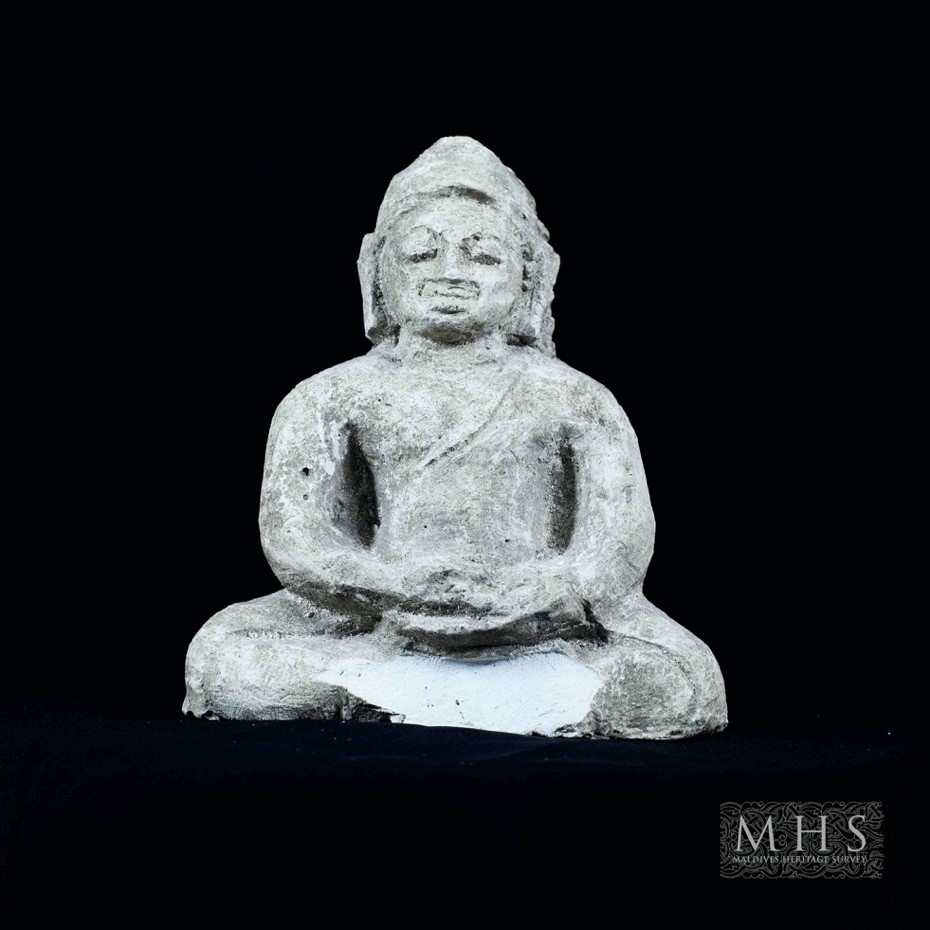
Seated Buddha statue recovered by the MHS at Isdhoo Kalaidhoo, now in the collections of the Maldives National Museum (c. 10th-11th century)
The project is led by Professor R. Michael Feener, and funded by Arcadia – a charitable fund of Lisbet Rausing and Peter Baldwin (Project 3984). Work in country was done in partnership with the Maldives Department of Heritage (now National Center for Cultural Heritage) and with the support of Washington University’s SaieLab and the Earth Observatory of Singapore at Nanyang Technological University. This pilot phase of work was based at the Oxford Centre for Islamic Studies, but with Professor Feener’s recent move to CSEAS the entire project has relocated to Kyoto, where we are currently establishing a new Digital Heritage Documentation Lab. A number of new hires will be made here over the coming months for the next phase of the project. Moving forward from its new base at Kyoto University, the MHS will be expanded to become the Maritime Asia Heritage Survey (MAHS). Over the next five years, we will not only complete the field survey of all remaining atolls in the Maldives, but also expand operations to open branches in other countries that have historically been part of the same maritime circulations of commerce and culture across Southern Asia: Sri Lanka, Indonesia, Brunei, and Vietnam.
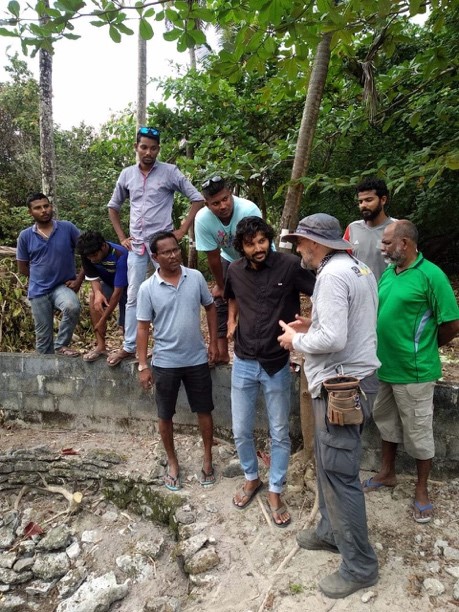
Explaining our work to neighbours in Kaashidhoo

Field photography of a Buddhist statue recovered in Isdhoo Kalaidhoo
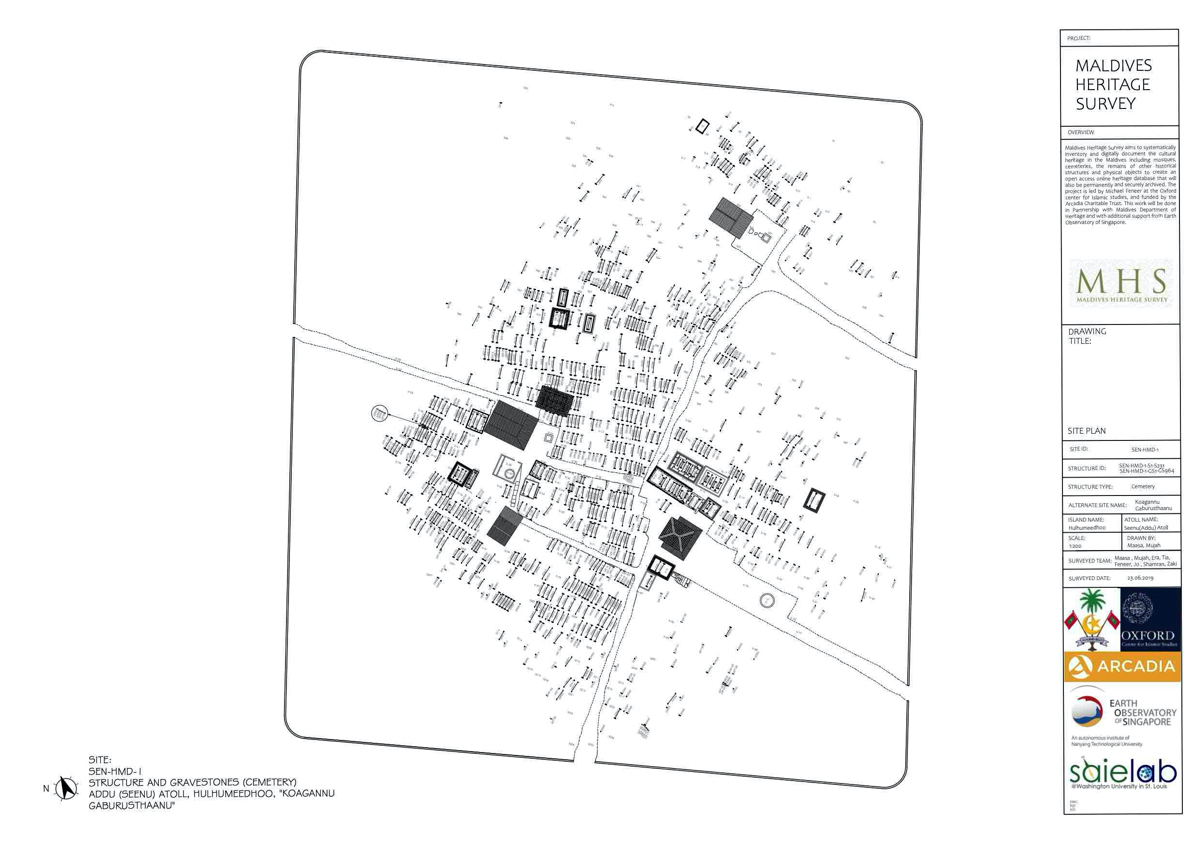
Site plan of Koagannu, the largest early Muslim cemetery in the Maldives marking the locations of five mosques, and over 1,000 coral gravestones (12th-20th centuries)
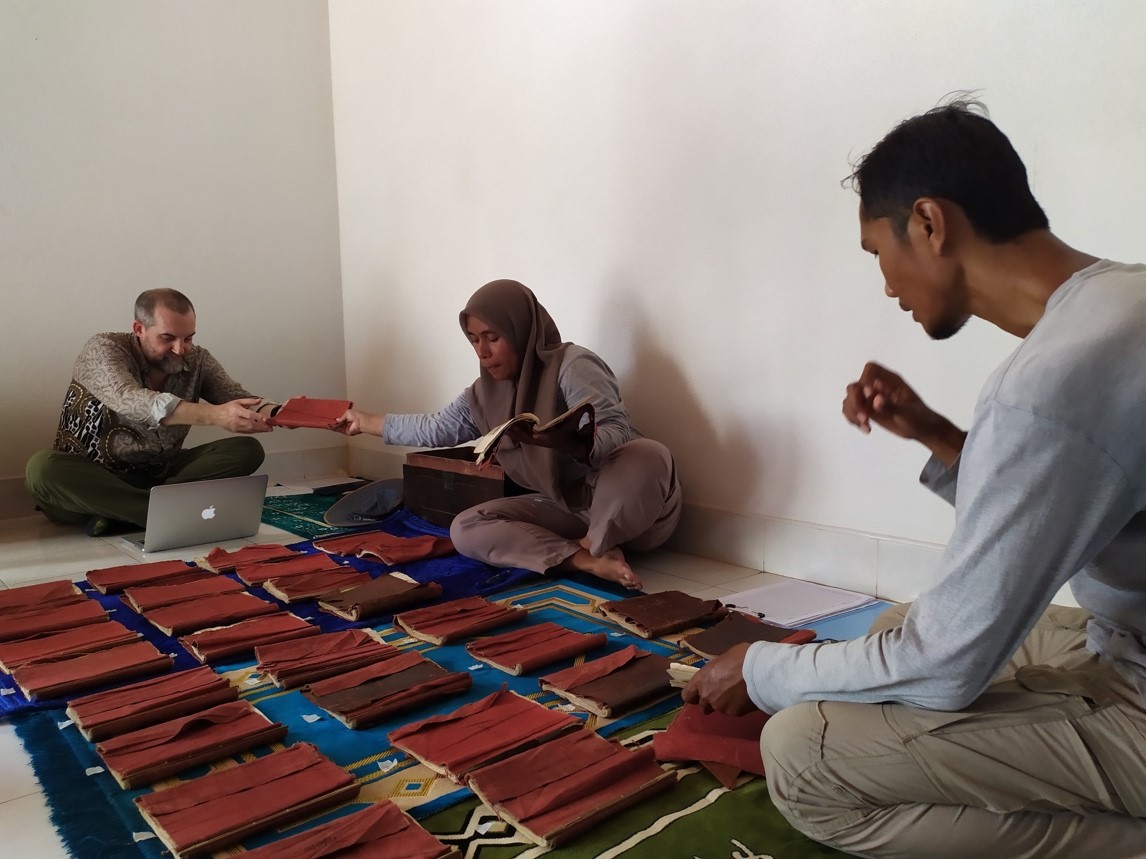
Organizing manuscripts for digitization in the Ihavandhoo mosque
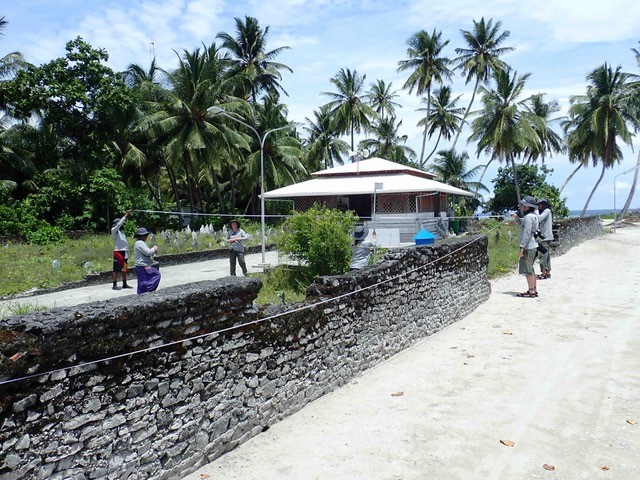
Work on site of a coral-stone mosque in Laamu Atoll
